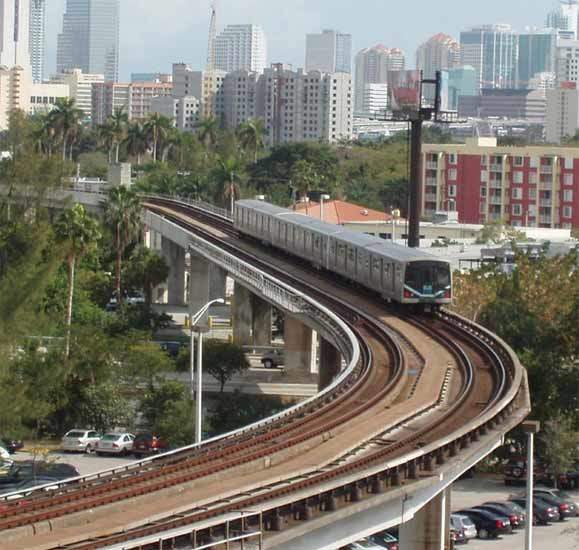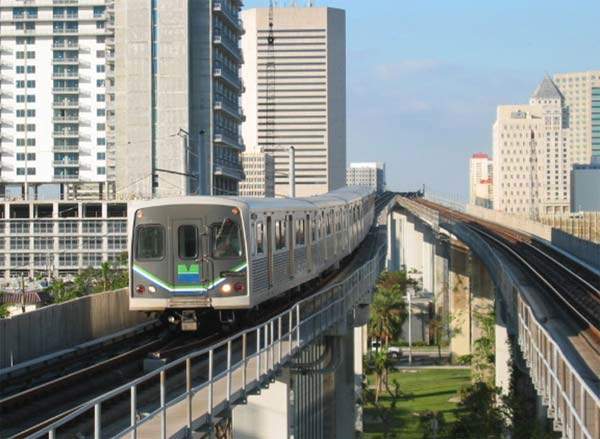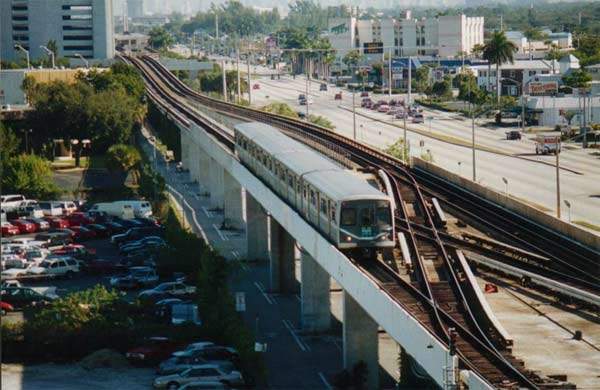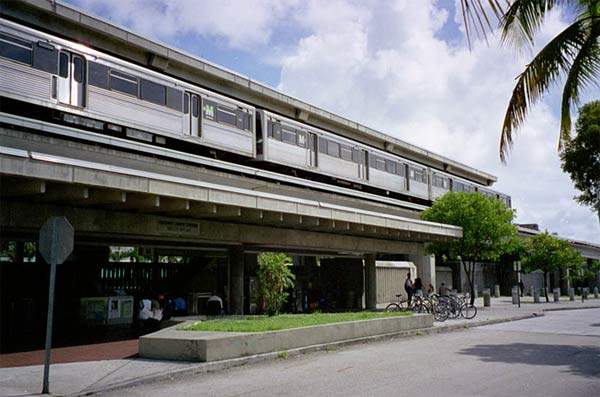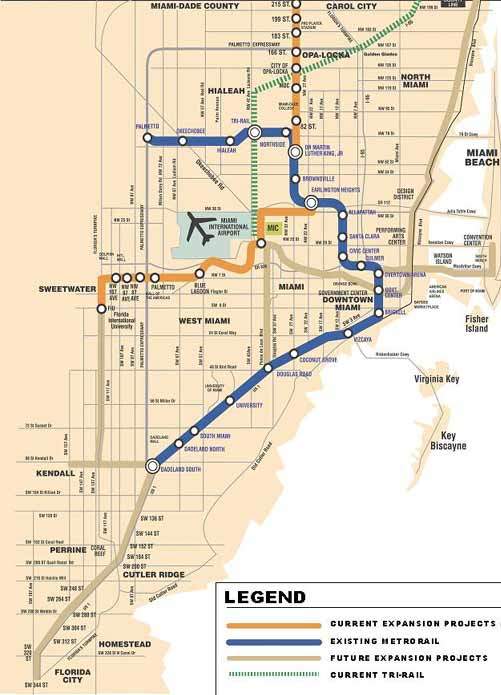Miami-Dade is the only metro rail system in Florida. It is one of two heavy rail rapid transit systems in the southeastern US, the other being MARTA in Atlanta. The system owned by Miami-Dade Transit (MDT) connects Miami-Dade’s Medley and Kendall.
Miami began its association with heavy rail mass transit in 1984, with the opening of the first stretch of a new elevated railway through the city centre to residential areas in the north, and the coast in the south.
The city has a population of 4.9 million and is situated on the Atlantic coast, southeast of Florida, home to the famed Miami beaches. Public transport in Miami is operated by MDT and South Florida Regional Transportation Authority (SFRTA).
Metrorail is not the only transit system within Miami. The MDT also operates the Metromover – an automated light rail people mover – buses and the Tri-Rail heavy rail commuter services in south Florida.
Metrorail has direct connections with all other transit systems within Miami. A direct interchange called Tri-Rail was built in 1989 to allow easy transfer between the mass transit system and heavy rail services towards out-lying areas.
Metrorail was extended three times during its formative years of 1984–85, and after a break of almost two decades a third extension opened, taking the line to Palmetto. An extension to the network is now in the planning stages, adding a completely new alignment to the existing one-route system.
Overall, operator Miami-Dade Transit is planning to double Metrorail’s track mileage by 2016.
The project
The Metrorail line consists of a 36km (22.5 mile) route with 22 stations between Dadeland South and Palmetto.
Following a public vote, a decision was made for a half-cent sales tax to be introduced to provide funding for public transport improvements. This will contribute towards the construction of Metrorail’s North Corridor Extension. A $1m grant has also been provided by the US House of Representatives, taken from federal funds to allow construction to take place.
The North Corridor Extension project includes construction of a new elevated Orange line of 15km (9.2 miles). It is a double-track, heavy-rail extension of the metrorail system. The extension line will run north from a junction with the existing route at Dr Martin Luther King Jr Metrorail station to NW 215th Street, just south of Florida’s turnpike. The terminal at NW 215th will have an interface to Broward county in the future. Seven new stations will be built. A new station will also be built at NW 103rd Street.
Construction of a 2.4-mile Metrorail extension project between Earlington Heights Station and the Miami Intermodal Center (MIC) began in May 2009. The Miami International Airport Link will connect the stations. The link is scheduled to start its operations in April 2012. The MIC will be connected to the airport through an automated people mover.
The MIC is the 23rd Metrorail station and will be a central transport hub in the future. With the completion of this project the county will have a rapid transit connection to its airports.
Infrastructure
The existing Metrorail system is a 36km railway, running on an elevated alignment for the majority of its distance. Only 2km is built at grade, and a total of 22 stations have been built along the route with a gap of roughly 1.6km between each stop. The system carries around 50,000 passengers per day.
The first section between Dadeland South and Overtown opened in May 1984, followed quickly by an extension north from Overtown to Earlington Heights in December of the same year. In May 1985 the main route was extended north again from Okeechobee.
The latest extension to be completed was a 2.3km northbound line from Okeechobee to Palmetto – the latter also the location of the train maintenance and storage yard.
All trains are formed into either four or six-car trains, and to accommodate them, all stations have been built to hold at least a six-car formation. Dadeland North and Government Center stations have been built with eight-car platforms. All stations are equipped with escalators and elevators.
The North Corridor Metrorail extension, which is underway, is expected to follow a similar style to the existing route. A maximum speed of 100km/h (60mph) is expected, with seven stations along the 15km route.
Rolling stock
A high-frequency service is operated on the Metrorail line. Trains run at six minute intervals and a large fleet of 136 cars is available to meet the daily services, formed into four or six car trains.
The fleet was built by America’s Budd Corporation – a rolling stock manufacturer that has since gone out of business – in 1983–84. All the trains are maintained at Palmetto Yard, west of Okeechobee station. Each car can hold 166 passengers with a full six-car train capable of accommodating almost 1,000 people.
Through the relatively large distances between stations – 1.6km on average – the trains are capable of 100km/h operation. The Budd cars have been designed for operation by either one-person or automatically, allowing manual control by a driver or computer-controlled acceleration and braking.
Signalling and communications
Signalling on the Metrorail line is limited to protection of crossovers. All other movements are controlled centrally from the command centre at Government Center Station.
For automatic train operation, trackside sensors control braking and acceleration, with the onboard operator controlling door opening and monitoring train movement and speed.
The future
Construction of the North Corridor Metrorail (NCM) is the beginning of a project to double the size of the network.
The East-West Corridor extension of the Metrorail system is also planned. It includes the construction of 10–13 miles of rail track. It will connect MIC to Florida International University. The extension includes the construction of ten Metrorail stations.

